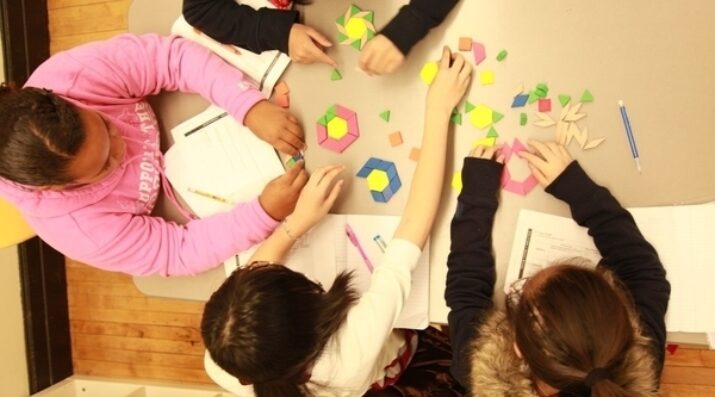New Designs for School
A Path to Learning Recovery and Math Achievement
Topics

We’ve all had the experience of truly purposeful, authentic learning and know how valuable it is. Educators are taking the best of what we know about learning, student support, effective instruction, and interpersonal skill-building to completely reimagine schools so that students experience that kind of purposeful learning all day, every day.
"Learning loss" is not a pandemic issue. One-size-fits-all federal assessment and accountability policies designed to promote equity have inadvertently and inequitably exacerbated unfinished learning in math.
The coronavirus outbreak disrupted education for millions of American students. As schools develop their recovery plans, there is clear evidence of the need to focus instructional strategies to address three specific areas:
- Pandemic learning loss is particularly severe in mathematics according to multiple studies, including NWEA’s ongoing research into students’ academic achievement while schools were closed (NWEA)
- Most students are falling behind, but marginalized student groups, including students of color, English language learners, and low-income students, are most vulnerable to the impacts of the pandemic (McKinsey & Company)
- Students who were in upper elementary school grades and transitioned into middle school struggled the most
While these challenges are unquestionably unique to this moment in our nation’s history, they are not new. In 2019, New Classrooms highlighted these challenges in its research publication The Iceberg Problem. It showed how one-size-fits-all federal assessment and accountability policies designed to promote equity have inadvertently caused inequitable outcomes in math to persist and exacerbate unfinished learning. A second publication was released last summer, amidst the pandemic, called Solving the Iceberg Problem, which outlined how schools can address significant student learning loss in middle school math with a strategy called tailored acceleration.
Tailored Acceleration
Tailored acceleration focuses on building mathematical understanding efficiently—regardless of where students are starting from—while adhering to the principles of high expectations, rigorous accountability, and educational equity.
Each student focuses on the specific pre-grade, on-grade, and post-grade skills they need to catch up and move ahead. With tailored acceleration, some students may not need a full year to achieve grade-level proficiency while others may need more time.
To grasp how tailored acceleration works, it is important to first understand a bit more about the interrelated nature of learning math and how mathematical concepts and skills build upon one another as students advance through middle school. At New Classrooms, our team of academic experts research how skills are grouped together and draw connections to other topical mathematical areas. And we have continually leveraged academic research on how students effectively progress through the K–12 mathematics landscape in order to map specific mathematical concepts and skills to the college- and career-ready grade-level standards.
Math Skills Are Interrelated
Math reflects a series of approximately 300 interrelated skills that span a student’s mathematical learning—from the time they master basic numeracy in the lower elementary school grades all the way through Algebra.

Courtesy of New Classrooms
For example, when a seventh grade student learns about Operations with Rational Numbers, the instruction builds upon predecessors from prior grades, including Understanding Integers and Rational Numbers (sixth grade), Operations with Decimals (fifth and sixth grade), and Operations with Fractions (fifth grade).

Courtesy of New Classrooms
Similarly, Applying Percents (also a seventh-grade skill) builds upon predecessor skills from prior grades such as Understanding Percents (sixth grade), Ratios and Ratio Reasoning (sixth grade), and Multiplying Decimals (fifth grade).
The Critical Attributes of a Math Skill
On the surface, the term “skill” can have a negative connotation and is often associated with phrases like “skill and drill,” which refers to the practice of memorization and repetition as a means to learning. For purposes of tailored acceleration, when we say “skill,” we are referring to the procedural, conceptual, and applied understanding of a skill.
We have also found that there are three critical attributes of a math skill. First, all skills require some level of predecessor or related knowledge. Second, all skills can be mastered at varying levels of depth. And third, learning a skill doesn’t mean you’ll retain that knowledge forever. Mastery of skills can fade in and out of long-term memory.
The Fundamental Flaw of Focusing on Grade-Level Standards
In traditional school models, students spend most of their time working on the same skills at the same time as their classroom peers. And their success is primarily measured based on annual state tests.
This approach is highly problematic, especially for students who begin the year situated far from grade level standards.

Courtesy of New Classrooms
Let’s take a look at this skills chart we created in order to better understand the challenges of grade-level math progressions. The darker boxes at the top of each column represent math skills that are included on the state-mandated summative test for each grade level.
In the sixth grade, the summative test covers about 46 skills, such as how to evaluate numerical expressions. But students won’t know how to evaluate numerical expressions if they have not experienced or had sufficient exposure to multiplying and dividing large numbers in prior grades, which are reflected in the yellow boxes beneath. To demonstrate true proficiency on the sixth grade math test, students will be required to know 32 (out of the 40) fifth-grade skills, 25 (out of the 42) fourth-grade skills, and 16 skills from before fourth grade.
Widening Inequities and Learning Loss
Challenges arise when students haven’t fully mastered prerequisite skills in previous school years. This unfinished learning makes it more difficult for students to learn more complex concepts in subsequent years. It is not a simple matter of catching up from the previous year either; in some cases, critical prerequisite skills may have been introduced several years prior and are revisited in increasingly complex applications over time.
When students do not master the simpler applications, this unfinished learning can accumulate if students’ future classroom experiences fail to recognize this fundamental challenge.
Enabling Tailored Acceleration
Today, a seventh grade teacher with incoming students performing at a fourth grade level faces a difficult choice: meet students where they are, knowing they’ll likely develop fundamental math skills but do poorly on the state test, or expose them to seventh grade content, knowing they are unlikely to learn most of it but may pick up a few new skills that are not as predecessor-dependent.
Tailored acceleration gives the teacher a better option to consider. Rather than looking to address every pre-grade learning need, the student can focus on those prior skills most relevant to success with current or future grade-level material.
There are three components needed to enable tailored acceleration.
- A precise understanding of students’ starting points
- A personalized plan that incorporates destination, timeframe, and program
- Regular assessments to measure progress
The idea is that each student can access the most efficient learning path based on their starting points to get to grade-level proficiency—even if it takes more than a year. In some cases, learning a grade-level skill may enable the student to organically address pre-grade skill development; in other cases, relying upon grade-level instruction is misguided. Partial mastery of a pre-grade skill may be all that’s required to move on for some skills, while for other skills, a more complete understanding is essential.
What matters is that each student can access the most efficient learning path to get to college and career readiness.
Now is the time to try new ways to meet students where they are and provide them with an accelerated path to proficiency.
Photo at top courtesy of New Classrooms. This article originally appeared on New Classrooms on April 21, 2021.




